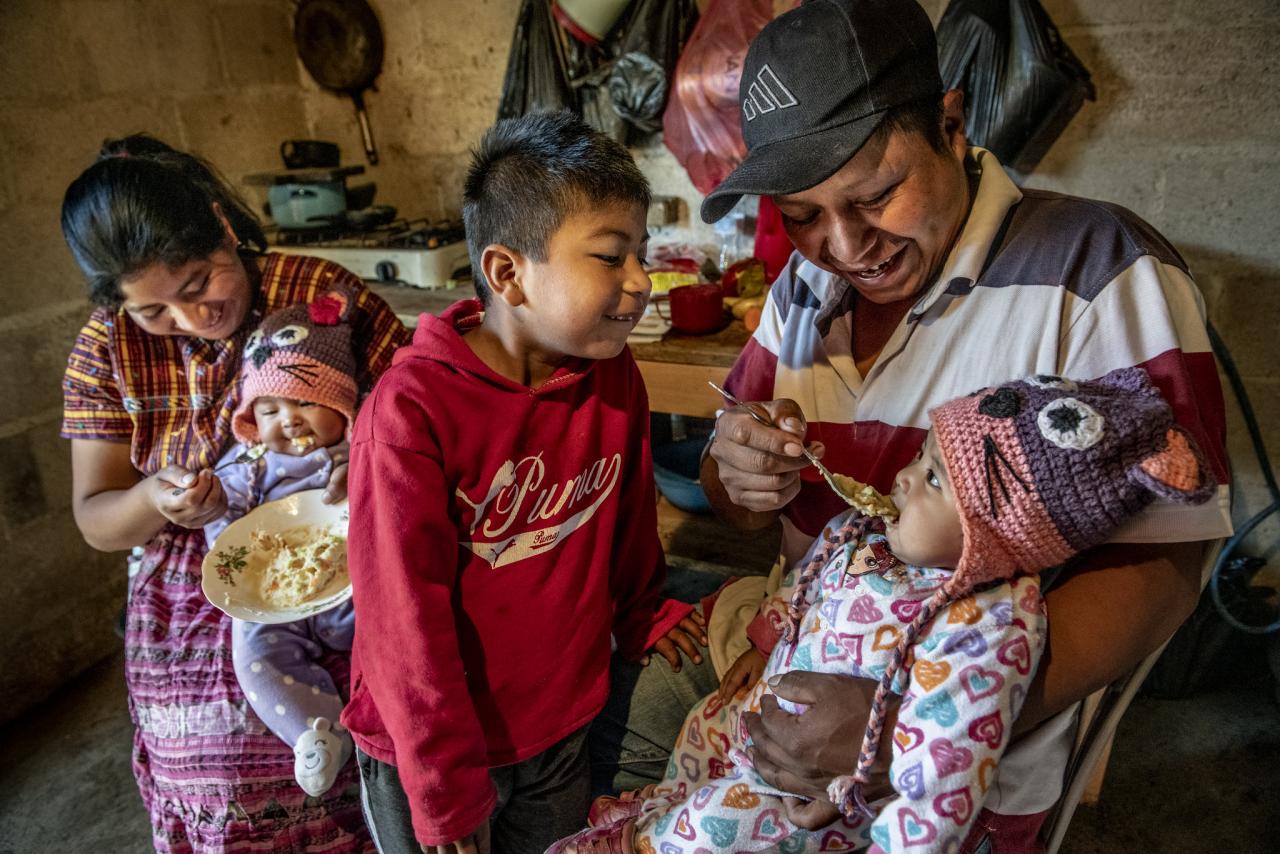
While it is understood that poor quality diets contribute to malnutrition in all its forms, there is a lack of understanding about what kind of foods people eat globally. Measuring dietary patterns is a challenging yet critical step to inform nutrition-sensitive policies, programs, and interventions .
USAID Advancing Nutrition, the Agency’s flagship multi-sectoral nutrition project, is working with a diverse group of partners to support the adaptation of a Diet Quality Questionnaire (DQQ) across 92 countries, for adults as well as for infant and young child feeding (IYCF). The DQQ was developed by the Global Diet Quality Project, a collaboration between Gallup, Harvard, and GAIN, with guidance from a technical advisory group of global experts in dietary assessment. Dr. Anna Herforth, Principal Investigator of the project at Harvard, has led development of the tool and is leading the adaptations across countries. Visit the DQQ website to view and download country-adapted tools and data.
Innovative Solution
Methods used to assess diet quality are typically costly and require specialized expertise and training. However, the new DQQ only takes about 5 minutes to administer, is read the same way every time, and does not require implementers to have nutrition expertise or specialized training. Another key innovation of the tool is that the questionnaire uses closed lists, consisting of a limited set of sentinel foods tailored to each country's context. The DQQ contains 29 yes/no questions related to the consumption of 29 unique food groups, including both healthy foods and foods to limit, resulting in validated diet quality data which make assessing diet patterns simpler and less costly.
Demographics and Indicators
Population-level data obtained from the DQQ tool can be used to calculate numerous diet quality indicators, including the minimum dietary diversity for women, the corresponding food group diversity score, the global dietary recommendation score, and the recently updated WHO and UNICEF infant and young child feeding indicators. This tool can also be used to calculate the percentage of a population consuming foods from each of the 29 unique food groups, including healthy food groups and unhealthy foods groups that are associated with an increased risk of non-communicable diseases.
Culturally Responsive and Inclusive Adaptations
The Global Diet Quality Project team conducted over 550 key informant interviews in over 92 countries to identify the most commonly consumed foods – or sentinel foods – in each food group, in each country. The purpose of these country-specific adaptations is to ensure DQQs are culturally responsive and representative of each country’s dietary patterns, and to reduce food group classification errors. Key informants in each country identified not only the appropriate sentinel foods in each food group, but also their common names if they differ from routine translations (such as “sukuma wiki” for “kale” in Kenya). In addition to the DQQs for the general population, the project has adapted IYCF questions consistent with 2021 WHO and UNICEF infant and young child feeding indicators . This is the first effort to systematically adapt the list-based approach for food group level data collection, which is critical to high-quality, consistent data collection in the DHS and other national surveys.
Assessing Food Lists at the Sub-national Level
Country-adapted DQQ tools include foods commonly consumed in different regions and seasons within each country. Validation results from Ethiopia, Vietnam, and Solomon Islands produced nearly the same results when the DQQ data were compared to a 24-hour multiple pass dietary recall. The Global Diet Quality Project, and USAID and USAID Advancing Nutrition are conducting additional validation studies of the country-adapted DQQ to assess the degree to which they capture foods commonly consumed among sub-national populations in different countries.
Implementation of the DQQ
The GWP is implementing the DQQ in 42 countries to assess diet quality and aims to reach all GWP countries (~140) by 2024. These nationally representative data will be publicly available in the year following their collection. The Demographic and Health Survey Program is also implementing question adaptations aligned with the DQQ for women of reproductive age, and for IYCF. All country-adapted DQQ tools are freely available as a global public good, and can be easily added to existing surveys to rapidly measure and monitor the diet quality of populations.